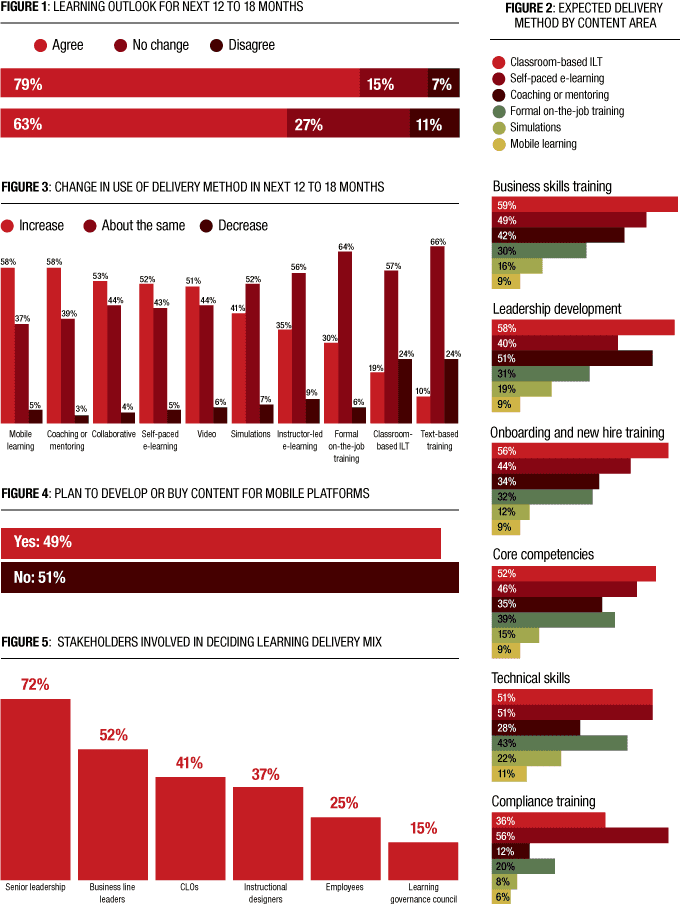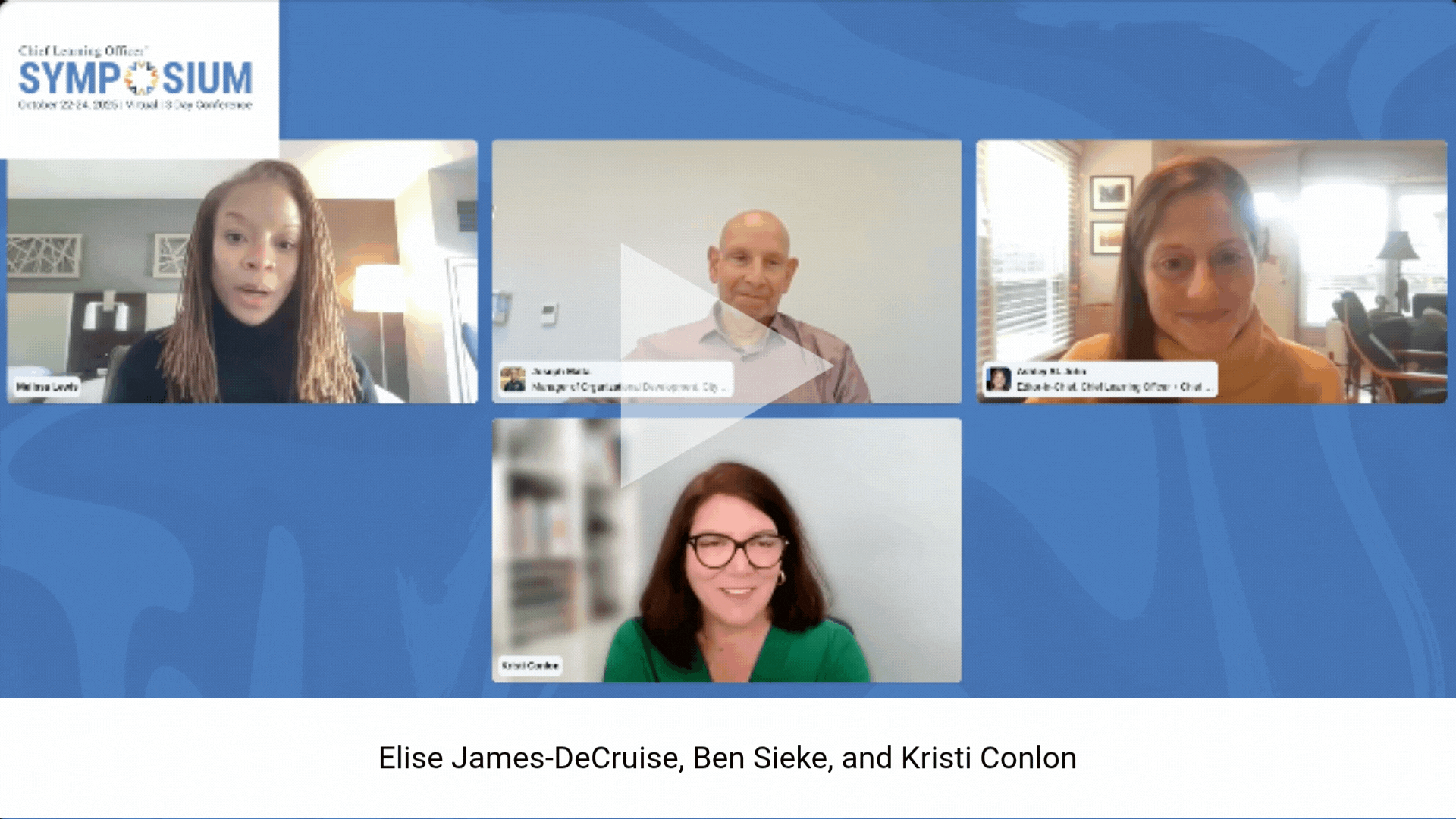Change is in the air for CLOs when it comes to learning delivery. But then again it’s been that way for a while now.
According to a survey of the Chief Learning Officer Business Intelligence Board, nearly 8 in 10 CLOs (79 percent) expect to adopt new training techniques in the next 12 to 18 months (Figure 1 below). A majority expect to change the company’s blend of training modalities (63 percent).
The Chief Learning Officer Business Intelligence Board is a group of 1,500 professionals in the learning and development industry who have agreed to be surveyed by the Human Capital Media Research and Advisory Group, the research and advisory arm of Chief Learning Officer magazine. This survey was conducted from June to July 2017.
Despite the winds of change, traditional classroom-based instructor-led training remains the most used learning delivery method (Figure 2) for many skill areas. More than half of learning departments use classroom-based ILT for business skills training (59 percent), developing core competencies (52 percent), leadership development (58 percent), onboarding and new hire training (56 percent) and technical skill development (51 percent).
But that’s not to say that ILT will remain at the top for long. Among the areas where CLOs expect to decrease usage, classroom-based ILT is expected to see the largest decrease (24 percent). The only other significant decrease expected is in text-based training, also at 24 percent (Figure 3).
Technology spending plans paint an equally mixed picture. E-learning delivery, performance dashboards, and technology to support instructor-led training were the highest priorities among survey respondents. Only one quarter plan to make mobile learning delivery a spending priority.
 Those spending plans seem to support the conclusion that mobile learning is one of the least used learning delivery methods. But the promise of learning delivered whenever and wherever employees are remains a powerful lure. A solid majority (58 percent) of CLOs expect to see an increase in usage of mobile learning over the next 12 to 18 months.
Those spending plans seem to support the conclusion that mobile learning is one of the least used learning delivery methods. But the promise of learning delivered whenever and wherever employees are remains a powerful lure. A solid majority (58 percent) of CLOs expect to see an increase in usage of mobile learning over the next 12 to 18 months.
The data from prior years of research show the slow fulfillment of that promise. In 2014, CLOs said only 12 percent of e-learning was delivered to mobile devices. Now that’s up to almost half (46 percent). The reasons are scale and efficiency. In last year’s survey, more than half (54 percent) of CLOs said a major driver of mobile learning was its ability to reach a large audience with few resources. The second biggest driver (38 percent) was cost savings.
All that aside, CLOs are just about evenly split in their plans to buy content for mobile delivery (Figure 4), indicating that learning departments are still in the early stages of determining the right mix and use of mobile in their learning delivery strategy.
Most surprising is who gets to make the decisions about how learning is delivered in organizations (Figure 5). Senior leaders and business unit leaders have a strong voice (72 percent and 52 percent, respectively). Surprisingly, those ultimately responsible for delivery of learning — CLOs, instructional designers and learning governance councils — are not nearly as influential (41, 27 and 15 percent, respectively).
And shockingly, in an era supposedly moving toward more personalized, employee-centric learning, only 25 percent of respondents said employees are involved in how learning gets delivered to them. The more things change, the more they seem to stay the same.














